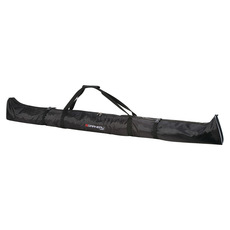Cross-country skiing – Why you should take it to heart
Winter is a time of year when people are least likely to take part in outdoor physical activity. Ironically, it’s the season in which they’d need to be doing it the most. Playing a winter sport not only staves off seasonal depression, it also boosts the immune system and helps protect our joints from the rigorous effects of the cold. What usually deters people from such activities is the fear of getting injured and of course, the cold. If you’re looking for a full body workout with a low risk of injury, why not try cross-country skiing?
Good for your heart
Not only does cross-country skiing get you moving, it’s also good for your heart. Cross-country skiing is one of the best sports for aerobic fitness, even ahead of running, cycling and swimming. It gives you the cardio workout few of us get enough of during the winter months because it engages all the muscles in your body and requires sustained low-intensity continuous effort. The health benefits are similar to those associated with hiking. Cross-country skiing, not to be confused with downhill skiing, helps to significantly improve your respiratory and cardiovascular functions. In a nutshell, a brisk trek on cross-country skis stimulates your blood flow and this in turn significantly improves your cardio and endurance. It’s a two-for-one deal that’s tough to beat.
Other health benefits
On top of what it does for your heart, cross-country skiing also benefits your muscles as well as the health of your joints. Cross-country skiing is a full-body workout because it engages all the muscles in your body from your shoulders and your triceps to your abdominal muscles and legs. Also, the gentle and gradual sliding motion of this type of skiing exerts little pressure on your joints.
To get the full picture, here is a list of the muscles that are used when cross-country skiing:
- Biceps
- Forearm muscles
- Pectoral muscles
- Abdominal muscles
- Buttock muscles
- Quadriceps
- Adductor muscles
- Calf muscles
Can you name one winter sport, other than cross-country skiing, that would engage ALL these muscles at the same time? You’ll be hard pressed to come up with an answer.
And additionally, this activity helps to reduce stress, anxiety and increases your sense of well-being.
Two styles of cross-country skiing to try
And to make it even better, there are two different styles of cross-country skiing you can try: Classic skiing (alternating steps) and skate skiing (resembles skating). Here is how they differ.
Classic: This technique is perfect for beginners because it resembles walking. Skis move parallel to each other and the skier uses poles to move forward. Skis move from front to back as if walking on the snow. Skis always stay parallel to each other.
Skate skiing : This style requires strength and a good sense of balance. The skier pushes off to start one ski gliding for a long stride and then switches to push off with the other ski and for each stride, the leg is pushed out laterally in the same way as with ice skating.
Noteworthy too is that the recommended number of times to hit the trails and get out cross- country skiing is three to five times per week for a minimum of half an hour each time. One hour of this activity burns between 550 and 1000 calories. Not bad, eh?
Still not sure? On top of all the health benefits cross-country skiing boasts, you’ll be pleased to know that setting yourself up with cross-country ski equipment is very affordable. Equally as important is that this sport is easy to learn and to enjoy, regardless of your age or fitness level.












